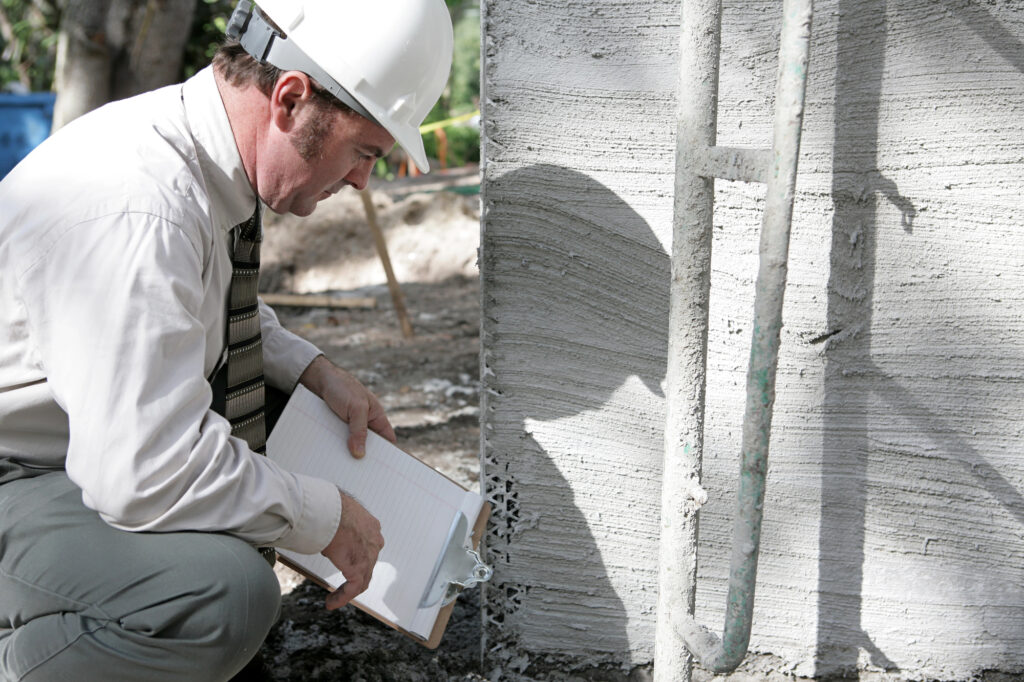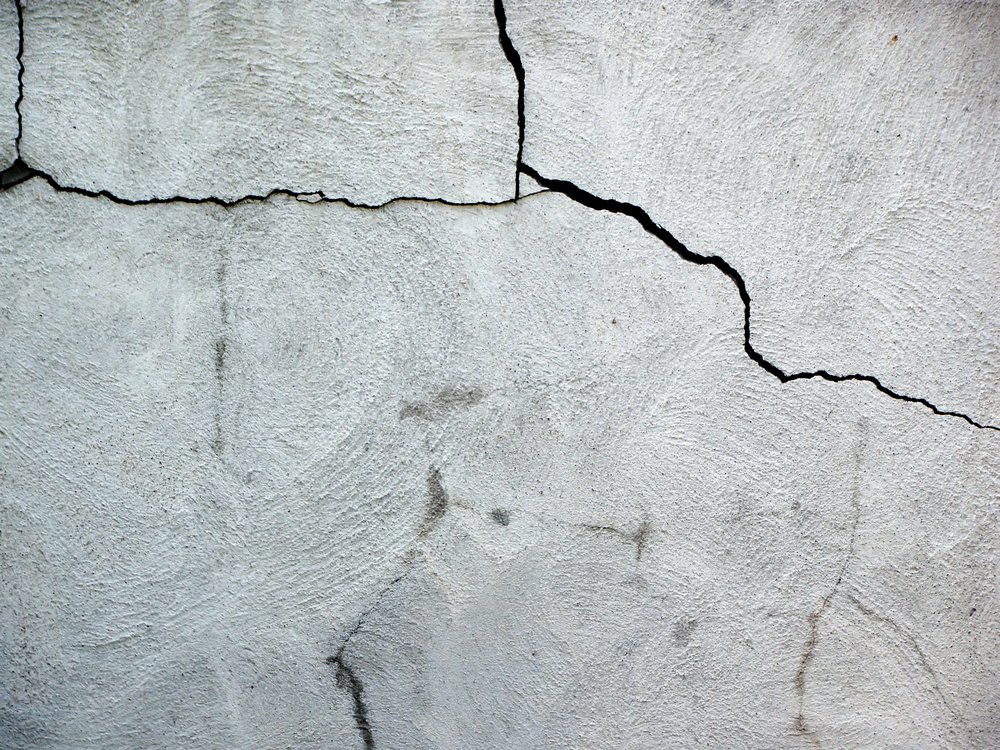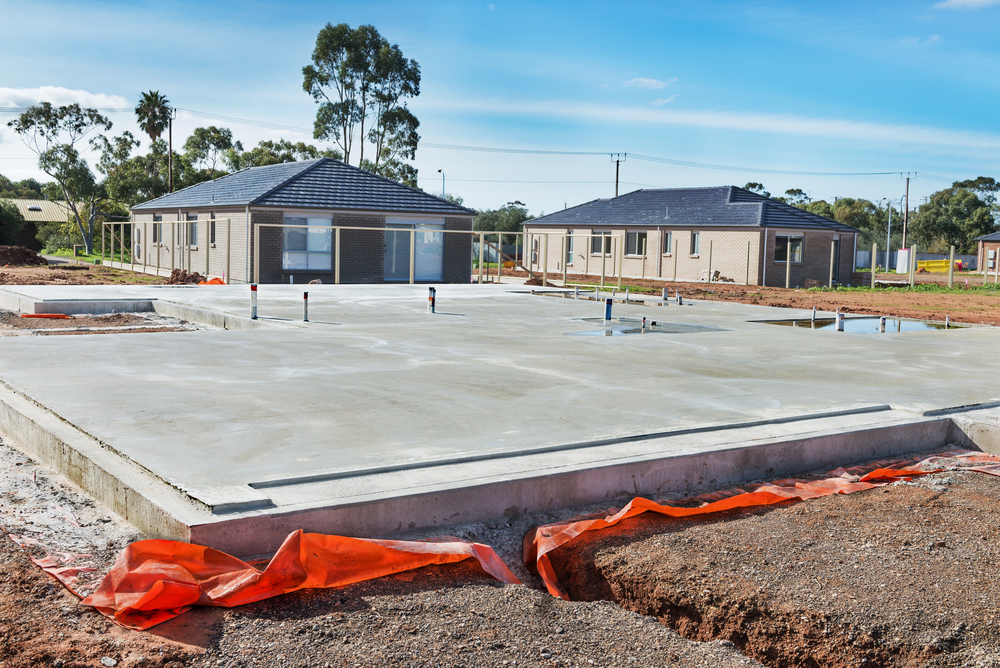
Part 1: Understanding your Home’s Foundation
The structural anchor
The Foundations and foundation stem walls, if applicable, are crucial in maintaining the structural integrity of your home. These bear the weight of the entire house, distributing it to the natural soil layers to prevent uneven settling and potential damage as well as assuring safe use and maintaining value.
Don’t forget the walls are resisting lateral soil pressures and keeping the exterior moisture, varmints and elements from intruding into your home. Therefore, inspecting the basement foundations or crawl space walls is the first and most critical step in your foundation inspection checklist.
What to Look For:
– Cracks in the Walls: Examine both the interior and exterior foundation walls for cracks. Horizontal cracks can be particularly concerning as they may indicate structural deficiency or possible hydrostatic pressure buildup behind the wall. Such pressure can result from improper drainage or excessive water accumulation, which exerts un-intended forces on the wall and can lead to significant structural damage if left unattended.
– Moisture and Mold: Moisture is a common enemy of foundation walls. Look for signs of water intrusion, such as damp spots, mold, and white efflorescence. These can weaken the concrete and reinforcement over time and lead to health issues for the occupants due to mold spores.
– Discoloration: Stains or discoloration on the walls can be evidence of leaks or previous water damage. This discoloration often appears as dark patches or efflorescence, which is a white, powdery substance caused by water-soluble salts, cement elements and critical lime and pozzolans left behind after water evaporates.
– Bowing or Leaning Walls: Walls that are not straight or are bowing could signal serious structural issues. Bowing walls often result from external pressures, such as soil expansion and external soil pressures.
If you notice any bowing or inward leaning of stem walls, it is a clear sign of structural failure and requires immediate professional evaluation.

Foundation Issues: Recognizing Warning Signs
Identifying foundation issues early, like with many mechanical systems, can save homeowners from expensive repairs and maintain the stability of the house. Here are some common foundation issues to watch for:
Common Foundation Issues:
– Cracks in Drywall and Finishes: While small hairline cracks are normal, large cracks can indicate significant movement or settling of the foundation. Cracks that form in a stair-step pattern on walls, along the ceiling, at wall joints or at window and door openings are particularly concerning.
– Uneven Floors: If your floors are uneven or have noticeable slopes, it could be a sign of foundation shifting. This unevenness can be signs of structural instability and should be addressed promptly to avoid further damage.
– Sticking Doors and Windows: Doors and windows that suddenly become difficult to open or close is an early sign of foundation movement and possibly failure. This is because the frames may become misaligned due to the shifting of the foundation, which affects the functionality of these fixtures.
– Gaps Around Windows and Doors: Gaps can form when the foundation settles unevenly, leading to misalignment. These gaps not only indicate structural issues but also allow drafts and pests into the home, reducing energy efficiency and indoor comfort.
– Basement Leaks: Water seeping into the basement is a clear sign of foundation damage which needs immediate attention. Persistent leaks can cause extensive damage to the foundation and reinforcement itself, as well as basement environment concerns, leading to mold growth and weakening of the structural materials.
Part 2: The Inspection Process and Identifying Foundation Damage
The Inspection Process: A Step-by-Step Guide
The first thing to do if you notice any of the above mentioned signs of foundation issues is contact your local structural engineer.
They will carry out a thorough inspection for accurately assessing the condition of your foundation.
Below is a detailed checklist of what to expect from your structural engineers inspection.
Step-by-Step Inspection Process:
1. Exterior Walkaround:
– Check the Grading: Ensure the ground slopes away from the foundation to prevent water pooling. Proper grading helps direct water away from the foundation, reducing the risk of water infiltration and pressure buildup against the foundation walls.Check those irrigation systems!
– Inspect Gutters and Downspouts: Make sure they direct water away from the foundation. Clogged or damaged gutters and downspouts can cause water to overflow and accumulate near the foundation. This can lead to extraordinary hydrostatic water pressure loads which have the potential to cause expensive damage.This is the difference from almost no loads on your foundation to 10’s of thousands of lbs of load on the sides of your foundation.
– Look for Cracks in Exterior Walls: Pay attention to any significant cracks. These cracks can indicate structural movement or settling that requires professional evaluation.
– Examine the Foundation Walls: Look for signs of damage, such as cracks, discoloration, or bulging walls. Use a flashlight to inspect hard-to-see areas and document any findings with photos. Inspect the center of the wall spans for an increasing gap between the siding and the concrete foundation edge. This is bad news: the detachment of the foundation top from the floor framing system is a sign of pending disaster.
2. Interior Inspection:
– Check Basement and Crawl Spaces: Look for signs of water intrusion, mold, and mildew. Use a moisture meter to detect hidden damp spots and inspect the condition of the walls and floors for any damage or abnormalities.We recommend mold testing on a regular basis.
– Inspect Floors and Walls: Look for cracks, gaps, and any noticeable shifts. Use a level to check for uneven floors and a straightedge to detect bowed walls.
– Test Doors and Windows: Ensure they open and close smoothly without sticking. Misalignment or difficulty in operation can indicate foundation issues.
– Check for Moisture: Use a moisture meter to detect any hidden damp spots. Pay particular attention to areas near plumbing fixtures, as leaks can contribute to foundation problems.
3. Foundation Damage Evaluation:
– Document Findings: Keep detailed notes and photos of any issues you find. This documentation will be useful for tracking changes over time and for providing evidence to professionals if needed.
– Evaluate the Severity: Determine if the issues are minor or if they require professional evaluation. Minor cracks and moisture spots can often be managed with simple repairs and preventive measures, while significant structural damage will need expert intervention.
Identifying Foundation Damage: When to Seek Professional Help
While some foundation issues can be minor and manageable, others require the expertise of foundation experts. Knowing when to call in a professional can prevent further damage and ensure the longevity of your home.

Part 3: The Role of Foundation Experts and Repair Services
Foundation Experts: Ensuring Structural Integrity
A foundation repair company sales person is not a qualified engineer!
Foundation experts, such as structural engineers, play a crucial role in assessing and repairing foundation issues. They have the training and experience to identify problems that may not be visible to the untrained eye and can provide solutions to ensure your foundation remains stable and secure.
Salesmen selling foundation repair products will make all sorts of (Empty) promises about their products. Remember that only a structural engineer can determine whether the solution is suitable to your specific problem.
How Structural Engineers Inspect a Foundation:
– Comprehensive Assessment: Engineers perform a detailed inspection of the foundation and the surrounding soil conditions. They evaluate the overall stability of the foundation, identify potential weak points, and assess any visible damage.
– Testing and Analysis: They may use tools such as soil probes, moisture meters, vertical and horizontal laser levels as well as gravity water column measuring devices to gather data. These tools help them understand the underlying causes of foundation issues, such as soil composition and moisture levels as well as foundation wall movements
– Recommendations: They can provide reports of findings as well as offer independent expert advice for you to arm yourself with real information. They also provide recommended repairs or reinforcement methods. This may include specific solutions such as underpinning, slab jacking, waterproofing, water drainage systems as well as foundation replacement depending on the severity and nature of the problems identified.
Foundation Repair Services: Addressing and Fixing Issues
When it comes to repairing foundation issues, professional foundation repair services are indispensable. These experts use specialized techniques and equipment to address various problems, ensuring long-term stability and safety.
Common Foundation Repair Methods:
– Underpinning: This technique involves strengthening the foundation by extending it deeper into the ground by periodic vertical devices extending into the ground. Vertical solutions are tailored to constructability soil type and the actual requirement needing the repair.
Although quite complicated, foundation trained engineers in geotechnical and structural studies are equipped to navigate the complexities. Foundation piering can vary with solutions like push piers, helix piers, drilled piers, grouted micropiles and grouted or other pressure stabilized soils applications. These solutions to stabilizing foundations are used when the existing foundation is determined to be insufficient to perform well in the soil environments and unable to support the structure adequately. This is often due to poor soil conditions or changes in soil stability.
– Slab Jacking: For concrete slab foundations, this method involves injecting a grout mixture under the slab to lift it back into place. Slab jacking is commonly used to address sinking or uneven concrete slabs and restore their level position. This foundation repair is utilized for settlement only.
– Wall Anchors: These are used to stabilize bowing or leaning walls by anchoring them to the adjacent surrounding soil, often beyond 12 feet. Wall anchors provide additional support and prevent further movement, helping to maintain the integrity of the foundation walls.
– Waterproofing: Addressing moisture problems through waterproofing can prevent further foundation damage. This includes sealing cracks, installing drainage systems, and applying waterproof coatings and membranes to protect the foundation from water infiltration. Underdrain systems as well as sump systems are frequently applied to foundation repair to lower lateral hydrostatic pressures.
Conclusion
Regular foundation inspections are crucial for maintaining the structural integrity of your home and avoiding costly repairs. By following this comprehensive foundation inspection checklist, homeowners can identify potential issues early, take proactive measures, and ensure their homes remain safe and stable for years to come. Remember, when in doubt, always seek the expertise of foundation professionals to address any serious concerns.
Call to Action
Don’t wait until it’s too late! Schedule your foundation inspection today and protect your home from potential damage. If you notice any warning signs or need professional assistance, contact your local structural engineering firm today.





